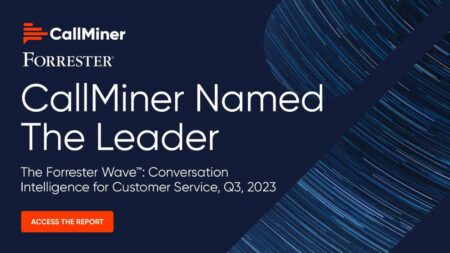 CEOs will expect chief information officers to grow out of being mere custodians of technology and to actively wield tech to drive revenue instead. This will include immersing themselves into the field of customer experience (CX).
CEOs will expect chief information officers to grow out of being mere custodians of technology and to actively wield tech to drive revenue instead. This will include immersing themselves into the field of customer experience (CX).
CIOs will need to learn the nuts and bolts of CX, not just the lingo, if they want to remain relevant and profitable. Moreover, pressure on CIOs will only increase as CEOs push digital transformation more rapidly.
Volatile markets and rising customer expectations are forcing a new performance paradigm onto today’s CIOs. Previously, economic upturns and downturns gave CIOs a chance to digest the implications, and the tech they would require to perform. While before we built processes and systems to last, we now have to build them for change. The only way to do this is put the customer at the centre of your strategy.
Forrester predicted that in 2015, CIOs would shift their focus to the business technology agenda, transforming their organisations to enable and deliver the technology, systems and processes to win, serve and retain customers. However, CIOs will face more sophisticated business demands, requiring deeper changes in the underlying composition, skill sets and operations of their tech management organisation.
Essentially, we are looking at a new kind of CIO –one who is able to examine new metrics. This will require them to take an outside-in look, beginning with the customer. They will need new skills and new tools such as customer journey mapping. More than that, they will need the support of almost every department, with the CIO performing the role of orchestrator.
As the role of digital expands, companies will continue to struggle to bring together the appropriate mix of vertical, product management, CX, data analytics and software engineering skills. Assembling the correct team will become a vital role of the CIO.
Ultimately, it’s about listening to your customer and providing what they want, not what you want to sell
Putting the customer at the centre of your business strategy and digital delivery is not exclusive to the realms of business-to-consumer companies however. Business-to-business companies have just as much to gain from making use of excellent CX.
Describing the digital transformation agenda, Forrester analyst John McCarthy said: “If B2C is the earthquake, B2B is the tsunami that follows”.
B2B companies are applying customer experience to their own business models by responding not just to their customers, but to their customers’ end users as well. We see this in the airline industry where turbine manufacturers are billing based on flying hours rather than simply selling capital investments. We are also seeing traditional B2B companies making use of consumer technology such as customer journey mapping and even going so far as to acquire software companies. Ultimately, it’s about listening to your customer and providing what they want, not what you want to sell.
This year will be the tipping point where a new breed of customer-obsessed CIO becomes the norm
The successful CIO who is able to deliver on digital transformation will need to: understand the customer; be proficient in user experience and customer design; connect the dots internally between the company’s divisions; break down the internal barriers or tech silos between departments; and understand that they will first need to act as an internal mediator before they can take on the role of orchestrator.
The emergence of digital experiences as a driver of customer value has placed technology at the heart of business strategy. With digital now reaching deeper into the domain of business operations and products, 2016 will be the tipping point where a new breed of customer-obsessed CIO becomes the norm.
- Pascal Matzke is vice-president and research director at Forrester, where he leads the global CIO research team




